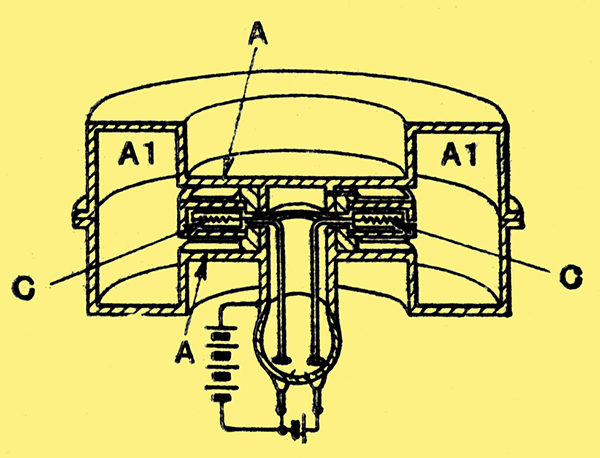|
A design by STC from 1937 but published in 1940.

Micro-wave generating system.
The figure shows a valve of the 'resonator' type for generating ultra-short waves of the order of a few centimetres. The valve is a diode, the indirectly heated cathode being entirely enclosed by the anode. The primary discharge of electrons takes place between the upper and lower faces of the cathode C and the adjacent surfaces A of the anode. The hollow extension A1 of the anode forms a resonating chamber in which oscillations of the desired frequency are built up.
The generation of sustained oscillations depends upon the fact that a uniform stream of electrons moving between two equidistant surfaces (the cathode C and anode A) develops a negative resistance within certain frequency bands. These depend, in turn, upon the capacity between the two surfaces in question, and upon an inductance factor which is, determined by the geometry of the system, including the inside length and radius of the resonating chamber A1. The power generated depends upon the specific resistance of the discharge stream, and upon the transit angle or 'transit time' required by the electrons to pass from cathode to anode.
Standard Telephones and Cables, Ltd. (assignees of F B Llewellyn). Convention date (USA), July 31st, 1937. No. 516750.
|